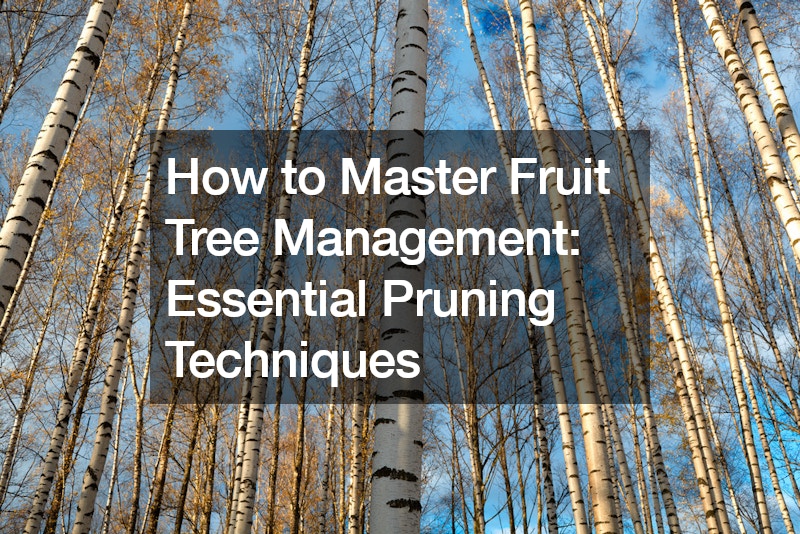Ah, the joy of homegrown fruit! Fresh, juicy, and bursting with flavour; there’s nothing quite like biting into a fruit ripened on your own tree. But for those perfect peaches, plump plums, or cascading cherries, a little TLC is required. Here’s where pruning comes in ; the secret weapon in your UK fruit tree management arsenal.
Don’t worry; you don’t need to be a certified arborist to master the art of pruning. This guide will equip you with essential techniques to keep your fruit trees healthy, productive, and looking their best throughout the UK seasons.
Why Prune Your Fruit Trees?
Pruning isn’t just about aesthetics (although a well-maintained tree is undeniably beautiful!). Here are the key benefits:
Increased Fruit Production: Proper pruning encourages healthy new growth, where the magic of fruit production happens. By removing old, unproductive branches, you’re directing the tree’s energy towards developing juicy fruits. Improved Fruit Quality: Good air circulation throughout the canopy allows sunlight to reach all parts of the tree, leading to better-developed and tastier fruits. Pruning also helps prevent diseases that thrive in damp, congested branches. Enhanced Tree Health: Removing diseased or damaged branches promotes overall tree health and prevents the spread of problems. Regular pruning also allows for better light penetration, reducing the risk of fungal diseases. Manageable Size and Shape: Left unpruned, fruit trees can become unruly giants. Strategic pruning helps maintain a manageable size, making harvesting easier and allowing you to control the overall shape of your tree. When to Prune Your Fruit Trees in the UK:
The best time to prune most UK fruit trees is during their dormant period, typically between late autumn (after leaf fall) and early spring (before bud break). This allows the tree to focus its energy on healing any pruning wounds before the new growing season begins.
However, there are some exceptions:
Stone fruits (like plums, peaches, and cherries) are best pruned in mid-summer (around July) to minimize the risk of a gum disease called bacterial canker. Apple and pear trees can benefit from a light summer pruning to remove any vigorous upright shoots that might compete with fruit-bearing branches. Essential Fruit Tree Pruning Techniques for the UK Gardener:
Now, let’s get our hands dirty (with gloves, of course)! Here are some fundamental pruning techniques to keep your UK fruit trees thriving:
Thinning: This involves selectively removing entire branches to improve air circulation and light penetration. Focus on removing inward-growing branches, dead or diseased branches, and any suckers (shoots growing from the rootstock). Heading Back: This technique involves shortening a branch by cutting just above a healthy outward-facing bud. This encourages new growth to develop in the desired direction and promotes fruit production on existing branches. Training and Shaping: For young trees, use this technique to establish a strong framework. Encourage the growth of main branches by removing competing shoots and guiding branches to grow in your desired direction. Pruning Tools for the UK Fruit Tree Enthusiast:
The right tools make all the difference! Here’s a basic pruning kit for UK fruit tree management:
Sharp Bypass Secateurs: Perfect for pruning branches up to about 2.5cm in diameter. A clean, sharp cut is essential to minimize damage to the tree. Lopping Shears: For tackling thicker branches (up to 5cm) that wouldn’t be manageable with secateurs. Pruning Saw: For removing larger branches or those that are too difficult to cut with lopping shears. Choose a pruning saw with a good quality, sharp blade. Safety Gear: Don’t forget to prioritize safety! Wear sturdy gloves to protect your hands and safety glasses to shield your eyes from flying debris. Remember: When in doubt, less is more! It’s always better to prune conservatively and come back for a second round later if needed, rather than over-pruning and potentially harming your tree.
Bonus Tip: Pruning for Different Fruit Trees
While the general principles remain the same, there are slight variations in pruning techniques for different fruit trees. Here are some resources to help you get started: The Joy of Bountiful Fruit With a little knowledge and these essential pruning techniques under your belt, you’re well on your way to becoming a master of UK fruit tree management. Remember, pruning is an ongoing process, but the rewards are plentiful (pun intended!). Here are some additional tips to help you enjoy a fruitful future:
Observe Your Tree: Each tree has its own character. Take time to observe your tree’s natural growth habit and adjust your pruning approach accordingly. Start Small: Don’t be overwhelmed by the idea of a major prune. Begin with a light prune and gradually gain confidence as you see the positive results. Seek Help When Needed: If you’re unsure about pruning a mature tree or a specific variety, consider consulting a qualified arborist. They can provide expert advice and ensure you’re on the right track. Beyond Pruning: Additional Tips for Fruit Tree Success in the UK:
Pruning is a crucial piece of the puzzle, but for truly bountiful harvests, consider these additional factors:
Planting in the Right Spot: Choose a location that receives at least 6-8 hours of sunlight daily and has well-draining soil. Proper Watering: Water your trees regularly, especially during dry periods. Aim for deep watering that soaks the roots. Feeding: Provide your trees with essential nutrients by applying a balanced fertilizer appropriate for the specific fruit tree variety. Pest and Disease Control: Be vigilant for signs of pests or diseases and take appropriate action to protect your trees. Remember, prevention is always better than cure! The Final Bite: Reap the Rewards of Your Efforts
With dedication and a little know-how, you can transform your UK garden into a haven for thriving fruit trees. The satisfaction of harvesting plump, juicy fruits grown with your own two hands is truly unmatched. So, grab your pruning tools, embrace the art of tree management, and get ready to enjoy the delicious rewards of your UK fruit tree adventure!
.






